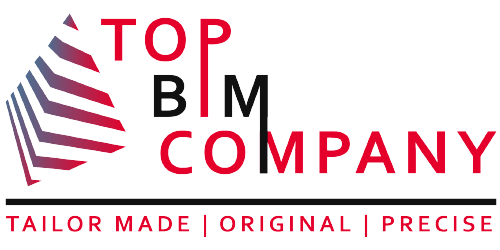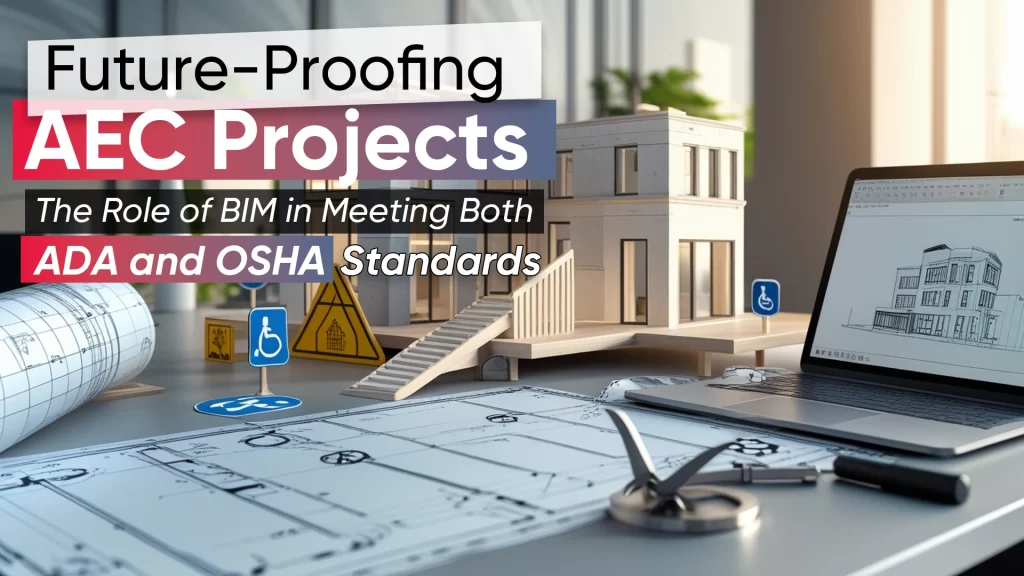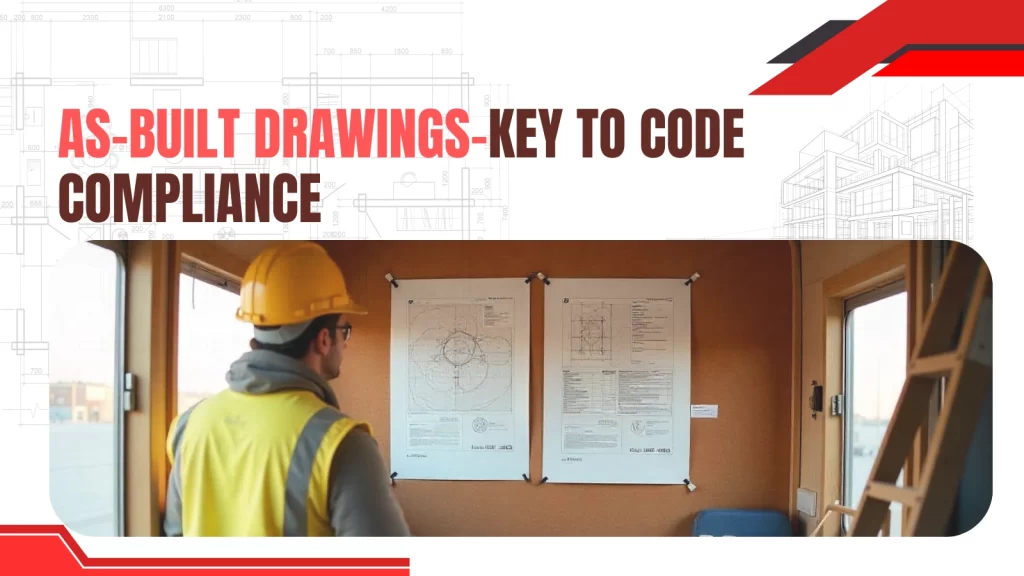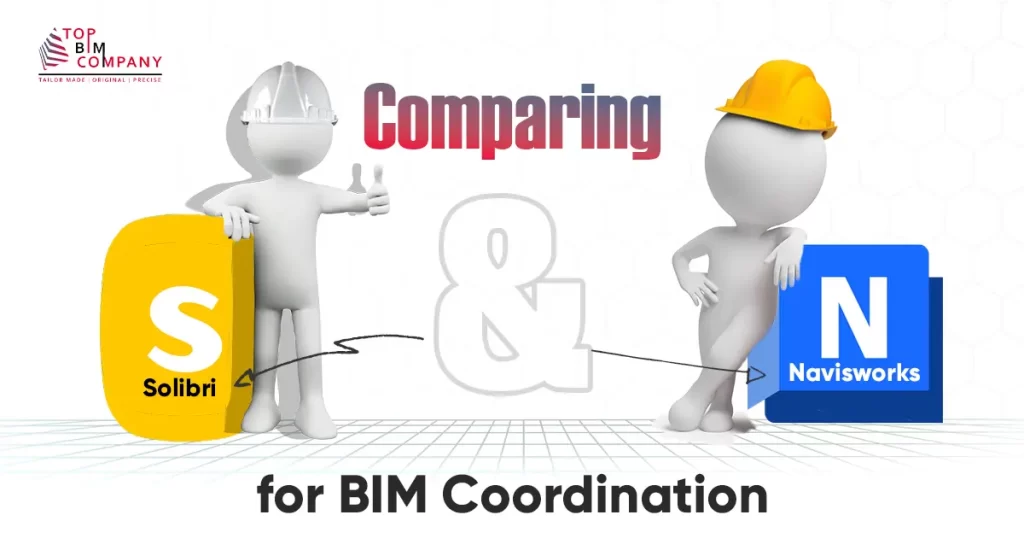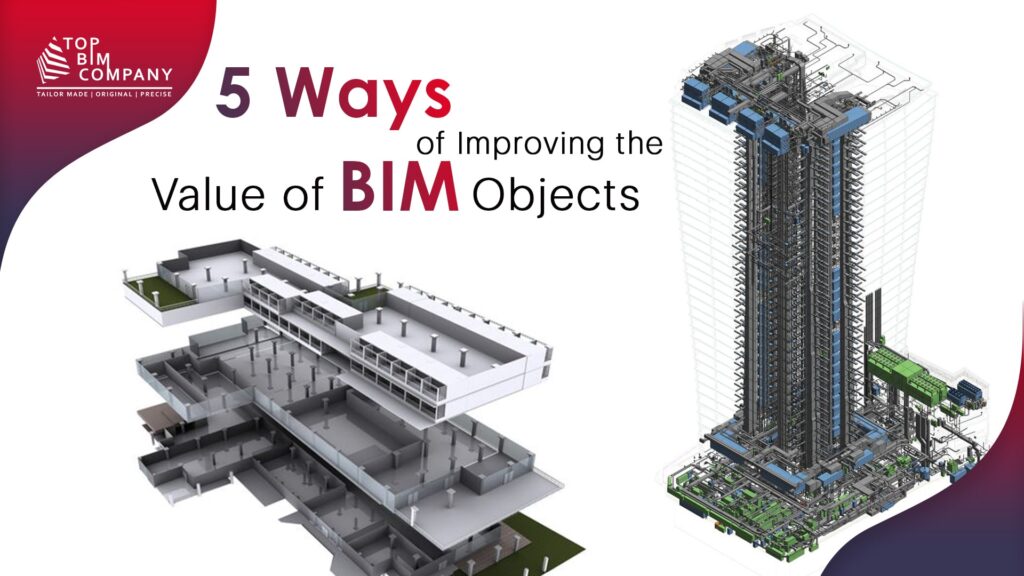
Building Information Modeling objects are also known as digital building products or components. They are three-dimensional virtual models of physical building products, containing detailed information about their characteristics, specifications and performance.
Table of Contents
ToggleBIM objects are a combination of object geometry and product information. These objects promote accurate material ordering, cost estimating and scheduling while reducing waste, errors and miscommunications.
The physical features of a product are represented by a BIM object in a digital setting, where the object “behaves” like the real product does in the built asset.
The BIM object mostly relates to performance and graphical data concerns. The following are included in the BIM object information:
- Technical details
- Materials
- Colors
- Finishes
- Geometries
- Certifications
- Item Specifications
- Link to Manufacturers
- Information about a business
Since they are computer-generated images and can be modified easily, many architects and engineers use them to identify design conflicts at an early stage before actual construction.
In addition, BIM objects help contractors visualize the finished project with greater detail.
They ensure constructability and allow effective coordination with subcontractors. Overall BIM objects are crucial resource.
Hence we should focus on BIM object accuracy improvement as well as BIM object detail improvement. Emphasizing these aspects will help to manage complex projects more efficiently throughout their entire lifecycle from design through construction and maintenance phases.
5 Tactics to enhance bim object value in construction
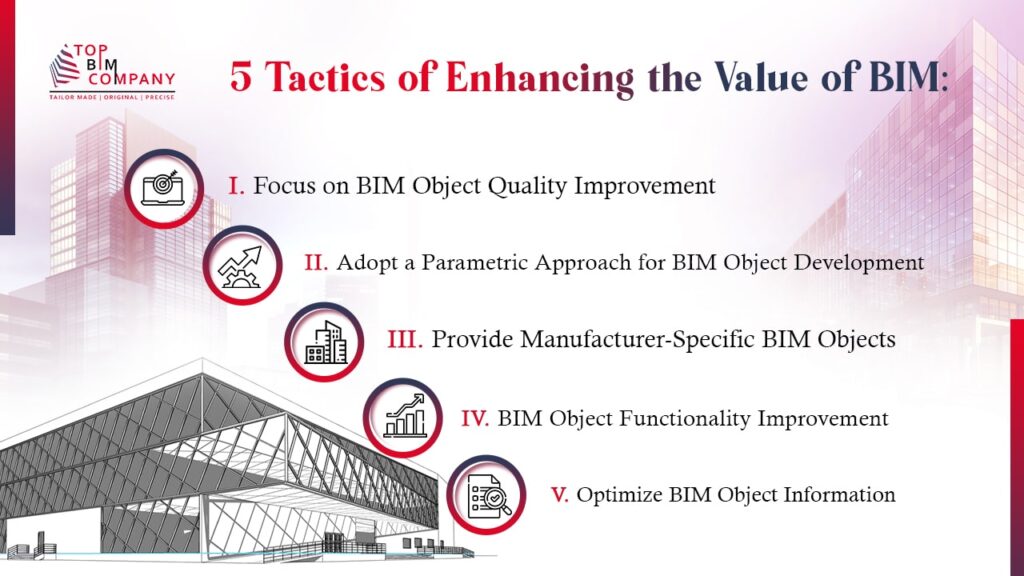
Focus on BIM Object Quality Improvement & Optimization
To enhance the value of Building Information Modeling, it is essential to focus on quality throughout the project lifecycle.
By prioritizing quality in every aspect of BIM implementation, projects can achieve improved outcomes in terms of cost-efficiency, scheduling certainty, sustainability goals, and reduced risk exposure during construction operations while delivering better end results to clients & users.
Also Check –
4D BIM Scheduling & Simulation
5D BIM Cost Estimation
This enhances overall customer satisfaction levels.
- Clearly Defining Roles: This begins with clearly defining roles, establishing a detailed plan for the modeling process, and adhering to industry standards. While the 3D view is crucial, it is also necessary to use the 2D details. To improve your model and manage the representation of the element with its various levels of detail, the two complementing representations must be kept apart.
- Quality Control Check: This must also be incorporated into every stage of the project to ensure accuracy and completeness. It helps to identify issues and correct them at an early stage, minimizing delays and costs.
- Meticulous Data Management: Beside this, implementing rigorous data management practices helps to ensure that all relevant information is recorded and accessible when needed.
- Improvement through Feedback: Continual improvement through regular feedback from all stakeholders will further increase the value of BIM by encouraging innovation and optimization.
- Ensure information conforms to BIM standards: Ensure all relevant information about the object is included in the model and conforms to BIM standards. This includes details such as dimensions, materials, performance properties and manufacturer’s data.
- Establish naming convention & classification: It is also essential to establish a consistent naming convention and classification system to enable streamlined data management and retrieval.
- Compatibility with other systems: Another key aspect of optimizing BIM object information is ensuring its compatibility with other systems, software applications and devices. This is achieved by using an open BIM format or developing custom plug-ins.
- Regular update and maintenance: Finally, regular update and maintenance of BIM objects are necessary to ensure their accuracy throughout the building lifecycle process. Adhering to these guidelines will lead to improved collaboration, decision making and project efficiency within the construction industry.
Adopt a Parametric Approach for BIM Object Development
To improve the value of Building Information Modeling objects, it is necessary to adopt a parametric approach for their development.
This means creating intelligent 3D models that are able to adapt to different design scenarios and parameter changes without losing their data.
Also Read: Converting Physical Buildings into 3D Models with Scan to BIM
By doing so, BIM objects become more flexible, customizable and ultimately deliver more value in terms of time and cost savings during construction.
- Create Scalable & Sustainable Model: A parametric approach enables designers to create scalable and sustainable models with specific data. The functionalities embedded within them include geometric information, quality control parameters, performance characteristics, environmental factors and maintenance requirements.
- Classifying Object Typologies: The classification system of your BIM object is crucial once they have been created since it enables you to quickly categorize and filter all of the material during searches.
- Defining Property Set: It is also feasible for more experienced users to define property sets for every project phase. The property set is what makes it possible to define a BIM object’s context, including its name, location, zone, and dimensions.
Provide Manufacturer-Specific BIM Objects
It is important to provide manufacturer-specific Building Information Modeling objects for use in building information modeling. By doing so, designers and architects are better equipped to make informed decisions about which products to use and can more accurately predict how those products will perform within their designs.
- Working on same product data: Manufacturer-specific BIM objects reduce errors and streamline collaboration amongst project team members by ensuring that everyone is working with the same product data.
- Reducing model rework: Further, providing this level of detail enables accurate cost estimation and improves project timelines by reducing model rework or discrepancies during construction.
- Adding Value to Design Process: Manufacturer-specific BIM objects adds value to the design process by increasing efficiency, accuracy and minimizing risk while promoting innovation and integration across all phases of a construction project.
BIM Object Functionality Improvement
BIM object functionality improvement refers to the process of enhancing the capabilities and performance of BIM objects to achieve higher levels of precision, efficiency, and customization.
This process involves the optimization of data exchange, integration with other software systems, and simplification of user interfaces.
- Make objects versatile, scalable & responsive: The goal is to make BIM objects more versatile, scalable, and responsive to end-user requirements.
- Improved functionality for AEC professionals: This enables architects, engineers, and construction professionals to simulate complex building processes quickly and accurately. Further, this generates high-quality architectural drawings with ease, streamline communication across project teams; and ensure optimal energy performance.
- Collaboration through Design to Operation: Further, improved BIM object functionality enables better collaboration amongst stakeholders during all phases of construction from design through operations. Stakeholders should prioritize investing in BIM object functionality improvement as a strategic long-term solution for efficient construction management.
BIM Content Distribution – Considering the Good & Bad Aspects
A new group emerged from the recent “BIM Big Bang“: BIM content distribution portal, which is an as “Amazing Online BIMLibrary“. Before continuing, a straightforward distinction between multiple platforms and systems is sometimes misinterpreted. BIM content management platforms and BIM content distribution portals are not the same thing. Both ideas can also be further divided into corresponding sub-categories:
- Integrating content management & distribution: Many solutions integrate content management and distribution features.
- Combining external system into internal setting: Some have the option to integrate an external system into the internal setting, resulting in a “pseudo-dedicated” channel. Unfortunately, such adaptability frequently has a price. Partially transferring data ownership, redirecting web traffic, and having less access to market intelligence are the costs associated with this.
- Seeking AmazingOnlineBIMLibrary.com – This 3rd party commercial website started out with nice and honest intentions. The idea was to establish a location where different BIM content, which is sometimes absent in native software, could be found. Users of BIM had easy access to a digital library. And manufacturers could interact with stakeholders that had previously been difficult to reach. It was a win-win situation for all parties concerned in addition to being a solution to a genuine issue.
Final Thought
BIM object usability improvement is an ongoing challenge in the architecture, engineering, and construction industry. Improved usability of BIM objects can lead to increased efficiency and productivity and also better quality designs.
To achieve this objective, it is crucial to develop standardized processes and methodologies for creating BIM objects that conform to industry-wide best practices. This ensures consistency across different software platforms and makes it easier for users to find and use appropriate BIM objects based on their specific needs.
With extensive collaboration among stakeholders such as manufacturers, architects, designers, engineers, contractors, BIM experts along with consistent upgrading of software tools and resources can improve the future of object usability.
For some inspiration, check out the BIM success stories on our Customer Showcase!
Ultimately the goal is for seamless object sharing within a cross-functional team. This ensures swift decision making throughout various project stages from design through constructional detailing to final delivery, meeting project goals.
You may also like to read:
12 Construction Industry Trends To Watch [2023-2030]
BIM LOD (Level Of Development)- 100 200 300 350 400 500
Innovative BIM Modeling Trends Shaping AEC Industry
Construction Industry Trends to Watch 2023
Role of Autodesk in Future Construction Technology

Extract quantities for costing and managerial management.
To know more about how we can help you improving your project cost efficacy
Our Services
Latest Post
Get A Free Quote
BIM Construction is the Future
Building information modeling (BIM) is the future of building design and construction. Get in touch with our BIM Experts.
